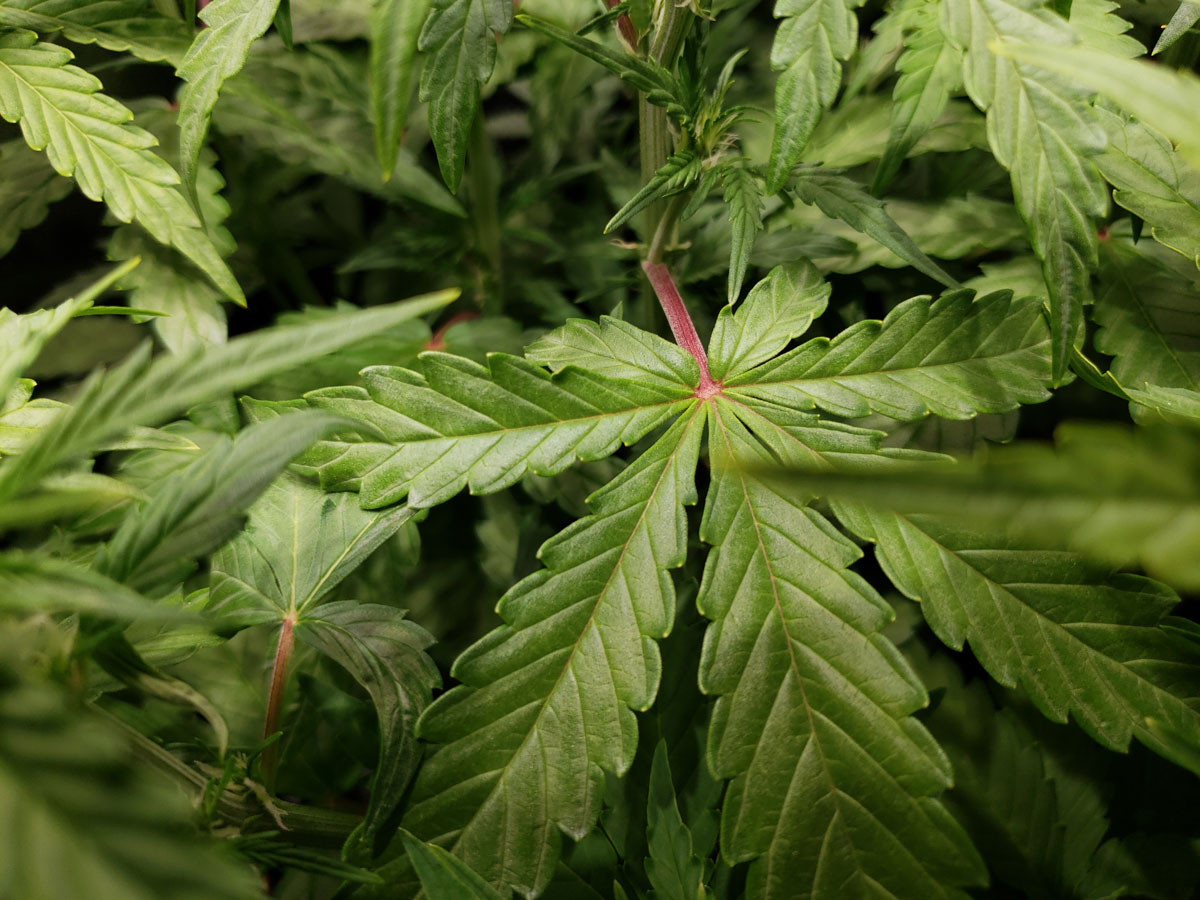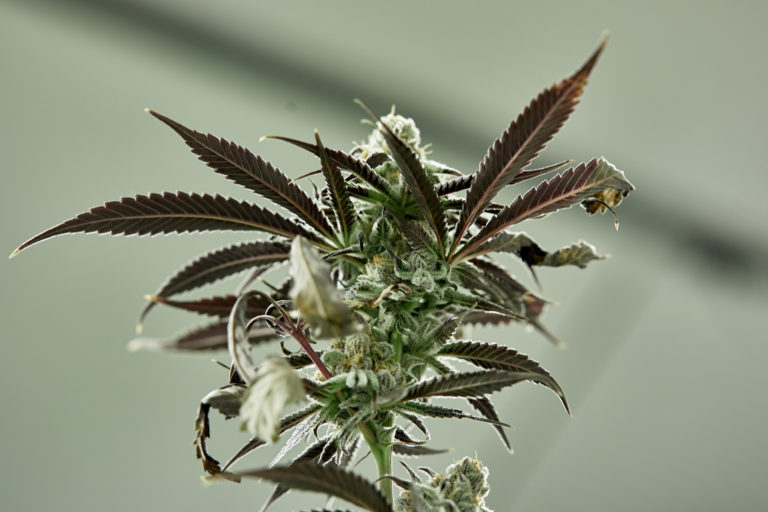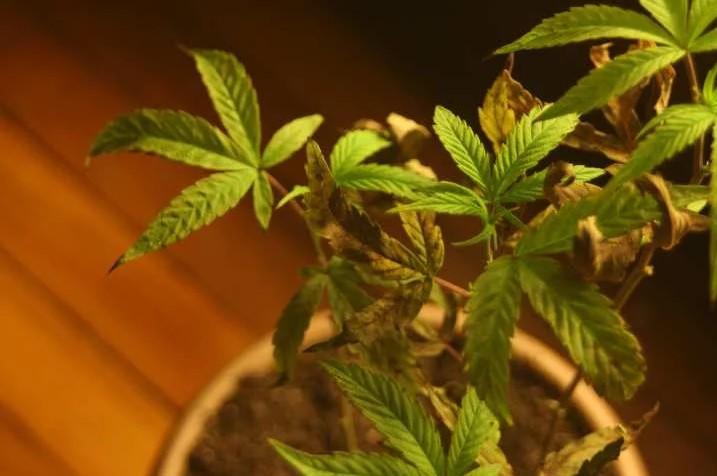We occasionally recommend products we love and might be paid a share of the sale.
If you are a cannabis connoisseur, who has expertise in growing their yield, you’d know how difficult it is to grow the right strain of cannabis, especially in optimal conditions. Amidst all the complications, a cannabis phosphorus deficiency is one of the most common issues that affect the lower portions of the leaves.
The cannabis leaves that are generally supposed to be bright green turn yellow or brown due to the issue. You might also start noticing prominent brown and yellow splotches around the leaves. Some of the leaves thicken in texture and start curling from the edges.
Just from these basic shortcomings, you should know how complicated phosphorus deficiency in cannabis plants is. This guide will explore more about that and the ways to fix the issue.
Why do Cannabis plants suffer from Phosphorus deficiency?
When it comes to the risks of phosphorus deficiency, the reasons are quite prolonged and the list of causes is longer too. Ideally, we’d recommend that you keep a check on all the basic causes so you can prevent the complications from getting worse in the future.
Some of the common contributors behind phosphorus deficiency in the cannabis plants include:
- Excessive rainfall
- Cold weather
- Soil compaction
- Acidic soil
- Bad soil health
- Excess insecticides in the soil
If you find any prominent symptom of phosphorus deficiency, it is always ideal to check for the reason immediately. Cold weather and extreme temperature drops can lead to temporary phosphorus deficiencies, which can be revived once the temperatures get better.
However, if the issues like in the soil or the pH, you need to manually correct the issue so it doesn’t get worse over time. Also, while you are checking for phosphorus deficiency, tally the complication with other nutrient deficiencies so you know which issues to treat for optimal growth of the plants.
What are the Symptoms of Phosphorus deficiencies in Cannabis plants?
The phosphorus deficiency in a cannabis plant is evident very prominently, especially if you are well aware of the signs and what you need to look out for. Some of the common ones include:
- Prominent and bright yellow and brown splotches on the leaves in the plant
- The whole leaves in the plant can darken in color, typically turning gray or blueish
- Some parts of the leaves can turn bright yellow if the condition is left untreated
- The stems can turn red in very rare occurrences
- Some parts of the leaves can turn bronze or purple
- Many leaves in the plant can turn stiff and become thicker in texture
- Some of the leaves in the affected plant can become stiff and dry too
- Affects the cannabis buds, deteriorating their quality in the long run
These are some of the most basic symptoms that pop up when a cannabis plant is phosphorus-deficient. Sometimes, the phosphorus deficiency is paired with other kinds of deficiencies like calcium, which lead to further complications too.
Keep in mind that phosphorus deficiency starts from the bottom and affects the leaves at the bottom first. They attack the oldest leaves first and then gradually affect the newer ones that are on the top of the plants.
The condition typically affects the plants after the flowering stage begins and the buds start coming out. Since the uptake of phosphorus during the flowering stage is the highest, it isn’t surprising that there are risks of deficiencies that follow.
How to Fix Cannabis Phosphorus Deficiency?
Once you start seeing the notable signs of cannabis deficiency in cannabis plants, you need to act promptly and at a faster rate. If you leave the deficiency without treatment, it will eventually affect the entire plant, leading to further deterioration in the quality of the yield.
So, how can you fix the cannabis phosphorus deficiency? There are a handful of reasons that contribute to the deficiency and some reasons are often unfound. Following are some of the effective ways to tackle the issue:
- Adjust the pH range
Would you be surprised if we said that the phosphorus deficiency in the cannabis plants is directly correlated to the pH range in the plant? It is true. Lack of optimal pH ranges in the cannabis plant leads to prominent phosphorus deficiency.
The cannabis plant typically absorbs the phosphorus through the roots of the plant, so if the root’s pH balance is off, it will inadvertently affect the overall phosphorus levels in the plant. Ensuring that your plant has optimal pH balance is thus the first step to fixing the phosphorus deficiency in the cannabis plant.
A cannabis plant root’s ideal pH should be between 6.2 to 7.0. In the hydroponic system, the root pH should be between 5.5 to 6.2. If you notice signs of phosphorus deficiency, check the pH of the cannabis roots and ensure that the plant has the optimal pH range for better growth.
1. Pay close attention to the roots
Not just cannabis, the growth of every plant is dependent on its roots. Especially when it comes to nutrient absorption, it goes without saying that the roots make all the difference in the world. If the roots aren’t in the optimal condition and have the best health, it will alter the efficacy of nutrient absorption, which in turn, affects the quality of the plant growth.
If you are overwatering the roots, it will eventually wash away all the essential nutrients, including phosphorus. This can eventually lead to complications of phosphorus deficiency in the plant. Also, compact soil leads to similar complications that affect the vitality of the roots and in turn, affect the levels of phosphorus in the plant.
2. Adjust to the optimal temperature settings
Not just humans and fish, even plants are susceptible to sudden and drastic temperature changes. If the environment or the temperature around the cannabis plants is less than 60°F (15°C), it can make it impossible for the roots and the overall plant to absorb the necessary nutrients it needs for optimal growth.
This eventually leads to complications of phosphorus deficiency as well. If you see signs of phosphorus deficiency in the cannabis plants, check the temperature in the surroundings or the grow room where the plants are growing.
The cold spell in the surroundings directly affects the cannabis plant’s root system, which has very prominent impacts on the phosphorus absorption in the plant. Not just phosphorus, it also alters the nutrient absorption of the other essential nutrients that are beneficial for the plant’s growth.
3. Ensure proper nutrition supply
When it comes to taking care of a cannabis plant, there are a lot of factors involved in it. Simply stuffing the soil with excess phosphorus will not address the deficiency. Instead, maintaining the correct ratio of nutrients in the soil is what brings positive change to the cannabis plant’s growth.
Sometimes, the availability of excess iron and zinc in the soil leads to phosphorus deficiency in the cannabis plants, which is a common issue that many beginner growers aren’t aware of. The buildup of excess nutrient salts in the soil can also lead to phosphorus deficiency and other nutrient deficiencies in the soil, something that most cannabis growers are aware of.
Ideally, you want to ensure that there are no excess availability of nutrients than it should if you want to tame the availability of phosphorus and ensure that it is getting absorbed in the right proportions.
The best way to ensure optimal nutrient supply in the cannabis plant and its roots is by flushing the plant thoroughly with some pH water that contains the right ratio of all the necessary nutrients that are needed for the growth of the cannabis. Also, if you are using a hydroponic system, chance the reservoir system to better alter the nutrient salts in the supply.
Always check the availability of all the individual nutrients before you end up adding more nutrients to the soil. If your cannabis plant doesn’t have a phosphorus deficiency and you are adding more to it, be assured that nothing is going to magically help or support the growth of the plants in that case.
Sometimes, adding excess phosphorus can do worse than good. So, balance is key when it comes to the nutritional balance required for the optimal growth of cannabis plants.
4. Keep a vigilant eye
Once you have implemented one or multiple of these fixes to address the phosphorus deficiency in your cannabis plant, the next in line is the waiting game. Simply doing the fixes and leaving it to fend for itself will not help you out in ways that you thought.
Sometimes, you might do a trial test run to check what is causing the deficiency and address the concern accordingly. However, not every remedy that you apply will show similar results as you expect. Sometimes, it is better to just keep a close eye on the complications and then address the issue accordingly.
If the pH balance isn’t the issue, tweak the problem and then approach the issue from another angle. It is always important that you keep a close eye on the problem and then address the problems as they come. You can 100% improvise and make things better than they are.
How to Prevent Phosphorus Deficiency in Cannabis plants?
Did we say that some cannabis growers intentionally cause a phosphorus deficiency in the plants to spruce up their appearance? In a few particular cannabis strains, the phosphorus deficiency leads to purple dyeing of the cannabis buds. This comes a lot in handy to enhance the appearance of the buds and give them the purple-red color that makes them sell more.
This is done by lowering the temperatures in the grow room. However, timing is key when it comes to inducing intentional phosphorus deficiency. If you do it without caution, the same will most definitely lead to complications in the quality of the yield and the overall harvest.
You need to wait right before the harvest time so that the buds develop their maximum flavor and potential. This prevents the quality of the yield and ensures that the final yield is of the best quality without any questions asked.
However, remember that this trick only works with a handful of cannabis strains and not every strain will respond in the same way that you anticipate. Also, the purple and red appearance of the leaves and buds don’t affect the taste, flavor profile or pungency of the strain. It is just an appearance thing, which is a reason enough for you to not fall prey to the trend and accidentally damage the potency of the plant in the long run.
Confusion between Phosphorus and other Nutrient Deficiency
Unless you are an experienced cannabis grower who has preconceived knowledge about such deficiencies and their implications, we’d recommend that you know about the distinct nutrient deficiencies that affect the cannabis plants. There are simpler and easily identifiable complications like phosphorus deficiency and then you have the more severe and potent deficiencies that can drastically affect the plant’s yield and quality of growth.
Some of the most common nutrient deficiencies that are confused for phosphorus deficiency include:
- Copper deficiency – leads to the purple-blue coloration of the leaves.
- Nitrogen toxicity – leaves start to curl downwards.
- Nitrogen deficiency – results in yellow leaves.
- Sulfur deficiency – can cause yellowing in the leaves.
These are some of the most basic complications about the nutrient balance that affect a cannabis plant. However, you need to ensure that you keep an eye out for all of these symptoms and test for the nutrient level of almost every standard nutrient before you administer a certain treatment.
Conclusion
Phosphorus deficiency in cannabis plants is a lot more common than you anticipate. However, delayed treatment for the deficiency leads to further complications that can easily alter the integrity and the quality of yield of the cannabis plant in question. We hope this guide gives you all the basic understanding of the deficiency, its causes and symptoms and the easy ways you can fix the problem with the right measures.
A rotating team of writers and editors dedicated to providing reliable information for the readers of American Promise. We’re all passionate about cannabis and actively engaged in this “budding” industry.
Contents





